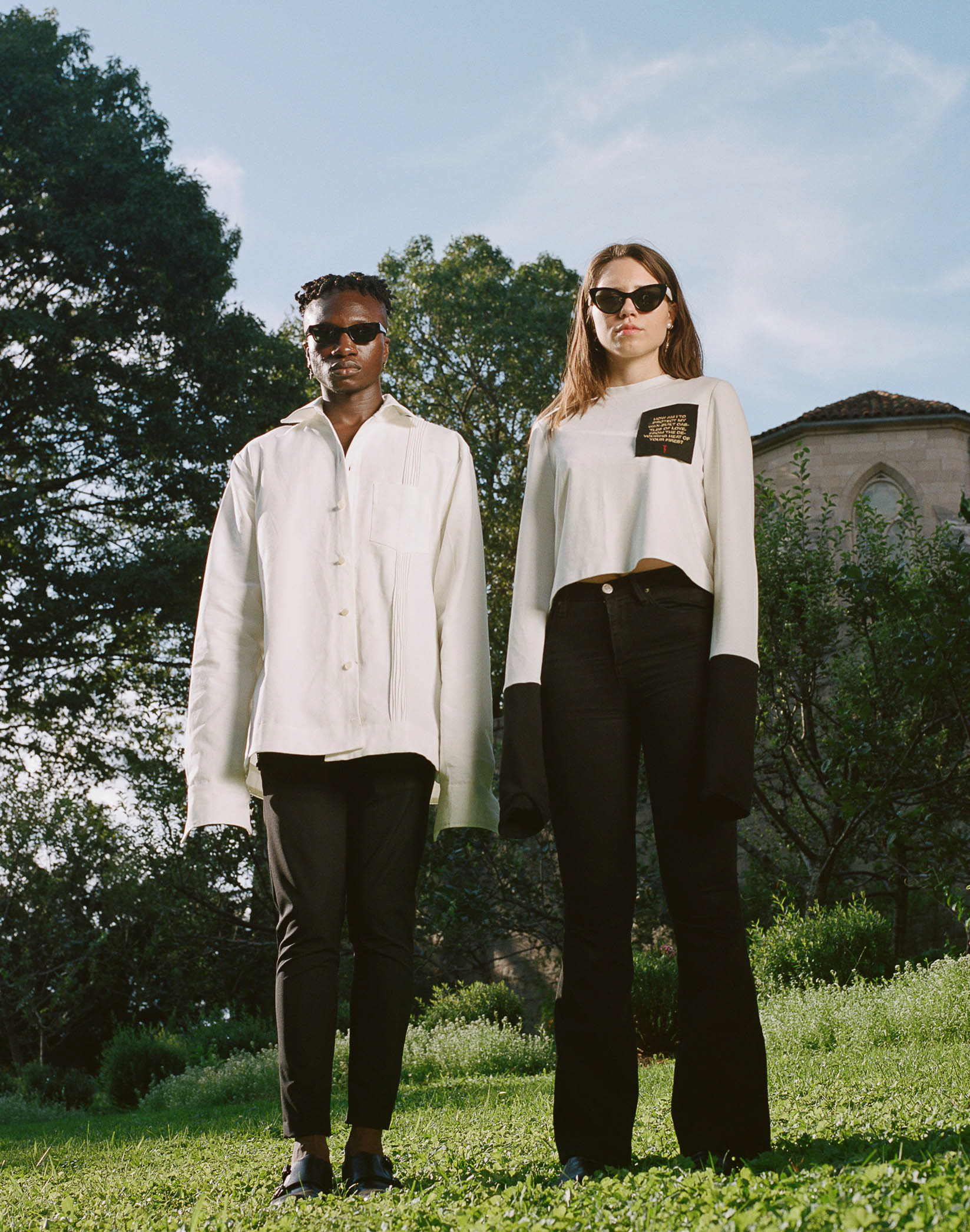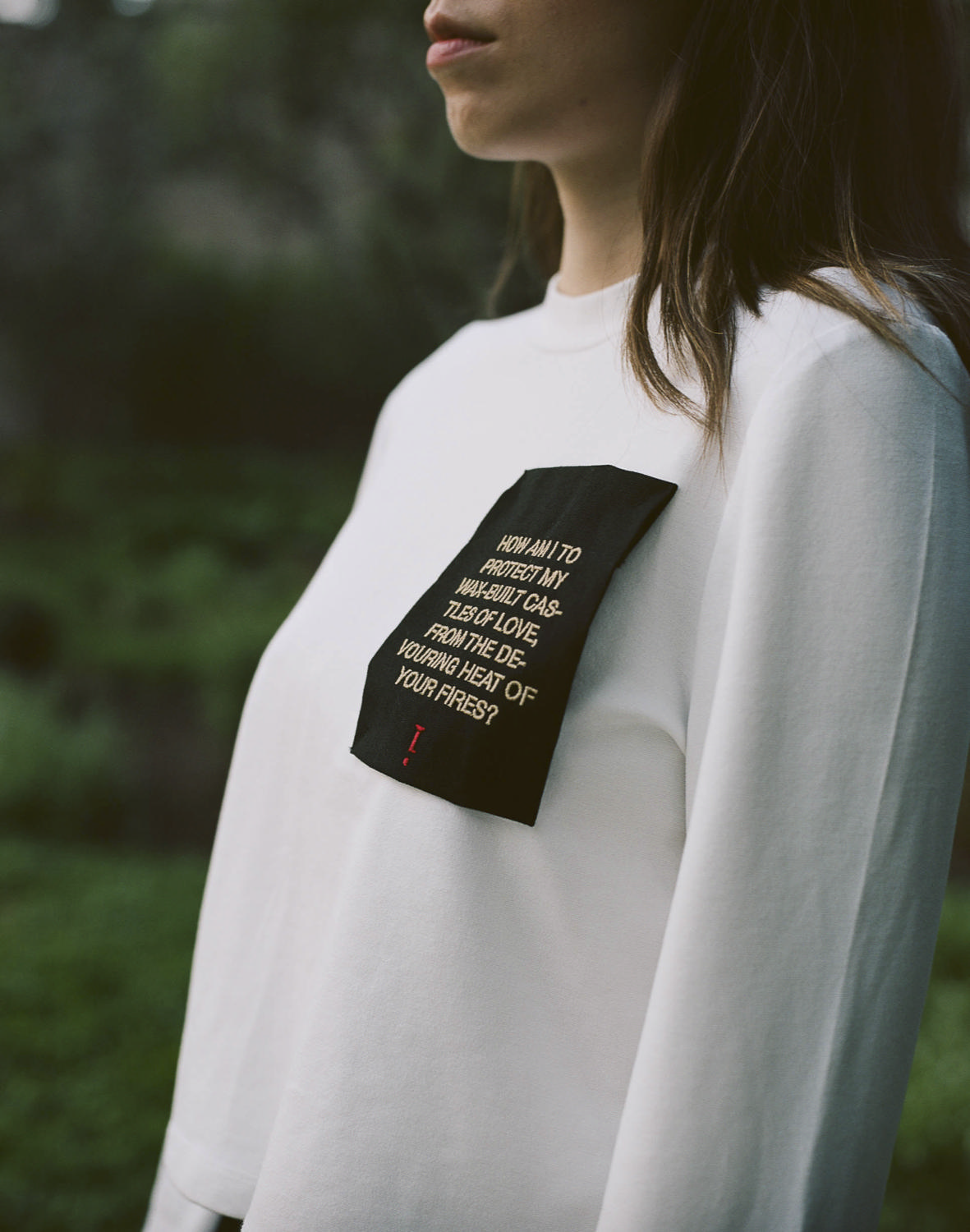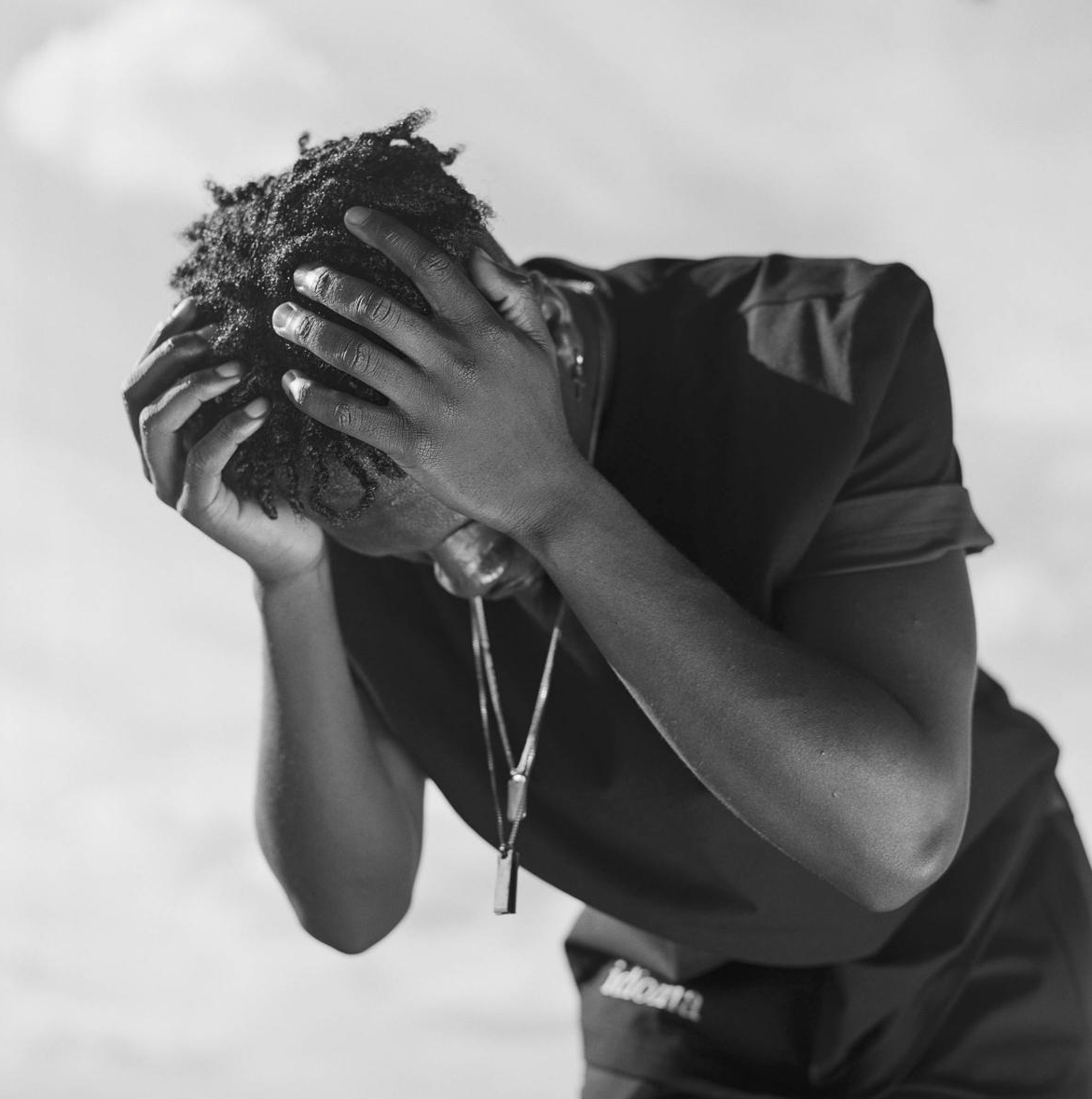In Conversation with
idioma NY
In Conversation with
idioma NY
idioma encapsulates how a brand can be more than just a brand.
We spoke to the fashion label’s two Creative Directors, Joel and Nabila,
where we touched on their approaches to creativity,
their inspirations, and their creative goals.

Joel & Nabila: idioma’s Creative Directors
In the last few years, fashion brands have slowly begun a process of evolution. No longer do fashion houses merely design clothes, as creatives behind these brands have understood the cultural relevance that a brand can carry. A perfect example of this is idioma, a project by Joel de la Rosa (@joel.delarosa_) and Nabila Brache (@nabilabrache). Founded in New York in 2019, idioma is more of a cultural platform than a fashion brand, incorporating aspects of cultural and artistic research into not only their brand, but the project as a whole.
idioma is solid proof that contemporary creatives are no longer being held back by working in one specific field. With their culture blog, idioma has managed to not only inform their audience on what inspires them, but also to open their audience up to artist that they otherwise would not have been exposed to. They have also managed to find a way of collaborating with artists from other mediums, such as with Nabila’s illustrations of Thaís Espaillat most recent poetry collection.
The way that idioma approaches the creative process is undoubtedly inspiring, as it shows other creatives that the only real limitations are the ones we set ourselves. We got the chance to have a conversation with both of idioma’s creative directors, where we spoke about idioma, how they approach creativity and their creative and conceptual goals:
First off, talk to us a little bit about idioma. Where did the idea come from, and do you guys see it as a fashion brand or as more than that?
JD: The idea came from developing a language, with fashion, art, and other interests we have. I feel that in order to create fashion that is relevant, we have to do more than just make nice clothes. We aspire to make clothing with meaning, to make sociological or political discourse while also developing the brand as an open-source cultural platform.
“We aspire to make clothing with meaning, to make sociological or
political discourse while also developing the brand as an open-source cultural
platform.”
NB: idioma for us is more than a fashion brand because with every collection and project it is an opportunity for us to learn. We hope to encourage others to learn as well. As creative directors, we have the ability to create so much more than clothes; powerful campaigns, spaces that inspire, clothes/pieces that make a statement, bridges between different industries.
So how did the concept for idioma come to be? Is this a project that you had in mind for a while or was its conception a more spontaneous affair?
JD: Nabila was designing her own line; I was making samples to begin my own brand. I just thought we would work better together. I thought that when it came to concepts and branding, I had good ideas and Nabila already had real life experience in working with her own brand. We had big dreams and they were so similar. I asked her if she wanted to work with me, she is a very warm and kind person, I just knew I could easily work with her. We knew we wanted to develop a visual language with our brand, but it took us a while before we finally got to “idioma”.
“I did not feel doubt regarding our
capability of working together. You don’t get that feeling a lot in life.”
NB: I would say it was a spontaneous affair, as I was already working on my personal line but when Joel made me the proposition, it honestly felt right. I did not feel doubt regarding our capability of working together. You don’t get that feeling a lot in life, and it’s the best decision I have ever made.
Once we both agreed to commit to it, we sat down for hours to talk about how we would work together and what we wanted idioma to become.

I know that your Latin roots are an important part of idioma’s creative concept. Could you elaborate a little more on just how Latin culture is intertwined with the project?
JD: It’s just part of our identity. We are interested in bringing Latin American culture into a high fashion context. I feel that it’s the right time to do so, with Latinos being such an integral part of culture. However, I have to say that we could be influenced by any culture, our vision is global, it's just that it will always have a Latin touch.
NB: Latin culture is very rich and there’s so much to share with the world. We always get inspired by it and combine/juxtapose it with other references, making the end result interesting and a unique proposition. Our roots are always present.
I’ve always thought of New York as a city that heavily affects the way creatives work. In my opinion, the competitiveness of the city can either break you down or motivate you to try and stand out as much as you can. How would you guys say that being in New York has affected both of your work as independent creatives and as idioma’s Creative Directors?
JD: It’s hard for me to see myself in another place. I’m motivated by it, I think even the pace of the city is in line with fashion. The fact that it is a global capital, also motivates me. Being surrounded by great cultural institutions like the Metropolitan Museum, MoMa, and countless galleries, it contributes to our work.
“With idioma, we’ve realized how challenging it
is to start from scratch. Being in New York just means you have to work more
efficiently/harder so you don’t fall behind.”
NB: Being in New York has definitely made me challenge myself more. You need to be aware of your surroundings and think about all the great designers that have left their mark in the city. It excites me to be a part of that. With idioma, we’ve realized how challenging it is to start from scratch. Being in New York just means you have to work more efficiently/harder so you don’t fall behind.
I’ve always considered collaboration a tricky affair, especially among creatives. I feel like it’s not easy to find a happy medium where all collaborators feel creatively fulfilled with the vision they had for a project. How do you guys balance each other’s ideas? Are concepts created as a joint idea or do you guys combine each other’s visions once the ideas are cemented?
JD: I think trust is the key to a successful collaboration. You have to work with people that you trust will work at the level you want it to be. The way me & Nabila work is very open, we throw ideas at each other, if we both agree, then we pursue it.
I remember a talk we had when we first started, I told Nabila if one of us disagrees with something the other really wants to do, we can’t just say “because I don’t like it”, there has to be a contribution, we are against empty criticism.
“Our best ideas come from conversations.
We don’t pursue anything until we are both satisfied with it.”
NB: It’s important to respect 100% the
person you are collaborating with, especially as creative directors of the
brand. Since day 1, it’s been very easy to communicate with Joel, especially
because the vision we have is aligned. Our best ideas come from conversations.
We don’t pursue anything until we are both satisfied with it. It is my understanding that the goal with idioma isn’t just to design clothes. Something that has really caught my attention is the various side projects that you guys have undertaken under the idioma umbrella, such as the culture blog and Nabila’s illustrations of Thaís Espaillat’s poems. In this respect, how did you decide what each of your roles would be in these side projects? Were these roles premeditated or do you just apply your individual talents where they are most useful?
JD: Well for us they aren’t side projects. It is part of the same project that is idioma. We want idioma to be a cultural platform, so we invite artists, and other creatives to share culture. We apply our individual talents where they are most useful; this just happens organically. For example, Nabila did those drawings mainly because she enjoyed the poetry and wanted to contribute.
“We want idioma to be a
cultural platform, so we invite artists, and other creatives to share culture.“
NB: There is room for everybody. I think being able to acknowledge this will be helpful for those creatives out there who find themselves stuck because they want to do everything themselves. As Joel mentioned, these projects are all part of what we want idioma to become. As for who does what, we can end up working on interviews or illustrations individually, but we always help each other out, offer constructive criticism, and make sure it’s up to both our standards.
What do you hope idioma becomes in the next few years? Is there a set goal in mind or are you just taking things as they come and growing the project organically?
NB: We have set goals in mind, but we have learned from the current crisis that the best we can do is be prepared to adapt, be open to different approaches, and always keep learning and applying ways to grow our brand. We have big ambitions and it’s what keeps us motivated every day.
“We have goals, but we believe flexibility is extremely important. It is also
important to be introspective and critical of yourself to always try to
improve.”
JD: Nabila couldn’t have said it better. We have goals, but we believe flexibility is extremely important. It is also important to be introspective and critical of yourself to always try to improve. It has become our modus vivendi.
Finally, is there any artist, from any given medium, that you guys consider everyone should know? If so, who would that be and why?
NB: I recently learned about an artist called Jes Fan. Fan’s work questions race, gender, and equality. What caught my attention the most though, was that Jes injects glass sculptures with biological substances like estrogen, melanin and testosterone and the end result is visually stunning. It’s great to see how an artist can communicate such strong, relevant messages using these substances, while at the same time making it look beautiful.
JD: I will choose two very different artists. Gehrard Ritcher is in my opinion the most relevant painter alive, his works make me think and feel. It’s a similar experience to when I see Mark Rothko’s paintings (in person), it’s spiritual. The other artist is Tania Bruguera, who coined the term “Arte Útil”, her work is very relevant because she pushes art to not only make political issues visible, but to actually provide material support to specific communities.
We’d like to give special thanks to Nabila
and Joel for taking the time to chat. For more on idioma, you can
follow their Instagram
@idioma.studio and visit their webpage at www.idiomastudio.com


